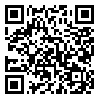Volume 12, Issue 8 (October 2018)
Qom Univ Med Sci J 2018, 12(8): 59-68 |
Back to browse issues page
Download citation:
BibTeX | RIS | EndNote | Medlars | ProCite | Reference Manager | RefWorks
Send citation to:



BibTeX | RIS | EndNote | Medlars | ProCite | Reference Manager | RefWorks
Send citation to:
Bayat F, Rezaee A M, Behnam B. Comparison of the Effectiveness of Play Therapy and Storytelling on the Improvement of Attention Deficit/Hyperactivity Disorder Symptoms in Students. Qom Univ Med Sci J 2018; 12 (8) :59-68
URL: http://journal.muq.ac.ir/article-1-1804-en.html
URL: http://journal.muq.ac.ir/article-1-1804-en.html
1- Department of Psychology & Educational Sciences, Faculty of Psychology & Educational Sciences, Semnan University Mehdishahr
2- Department of Psychology & Educational Sciences, Faculty of Psychology & Educational Sciences, Semnan University Mehdishahr ,rezaei_am@semnan.ac.ir
3- Department of Medical Sciences, Faculty of Medical Sciences, Semnan University
2- Department of Psychology & Educational Sciences, Faculty of Psychology & Educational Sciences, Semnan University Mehdishahr ,
3- Department of Medical Sciences, Faculty of Medical Sciences, Semnan University
Abstract: (139102 Views)
Background and Objectives: Attention deficit/hyperactivity disorder is associated with many problems and several treatments have been proposed for the treatment of children with this disorder. The present study was carried out with the purpose of determining the effectiveness of play therapy and storytelling on the improvement of the symptoms of hyperactivity disorder/attention deficit disorder in students.
Methods: The research method was pretest and posttest design with control group. At first, the Conners scale was implemented on 450 female students (age range, 7-12 years) in the schools of Semnan city. Then, 45 students who obtained the highest score based on the Conners scale, were voluntarily selected. In the following, these 45 students were randomly and equally assigned to two experimental groups of experimental (play therapy and storytelling) and control. Data analysis was performed using multivariate analysis of variance (MANOVA) and univariate variance analysis.
Results: According to the results of MANOVA test, there was a significant difference between the experimental and control groups in the variables of hyperactivity, conduct, attention deficit, and anxiety [p≥0.005, F=(35.4)=17.22]. The results of the univariate ANOVA indicated that there was a significant difference between all studied variables, except for inactivity between the groups (p<0.005).
Conclusion: The results of this study revealed that play therapy and storytelling have a positive effect on the improvement of attention deficit/hyperactivity disorder, thus, applying these methods can have beneficial results for students.
Methods: The research method was pretest and posttest design with control group. At first, the Conners scale was implemented on 450 female students (age range, 7-12 years) in the schools of Semnan city. Then, 45 students who obtained the highest score based on the Conners scale, were voluntarily selected. In the following, these 45 students were randomly and equally assigned to two experimental groups of experimental (play therapy and storytelling) and control. Data analysis was performed using multivariate analysis of variance (MANOVA) and univariate variance analysis.
Results: According to the results of MANOVA test, there was a significant difference between the experimental and control groups in the variables of hyperactivity, conduct, attention deficit, and anxiety [p≥0.005, F=(35.4)=17.22]. The results of the univariate ANOVA indicated that there was a significant difference between all studied variables, except for inactivity between the groups (p<0.005).
Conclusion: The results of this study revealed that play therapy and storytelling have a positive effect on the improvement of attention deficit/hyperactivity disorder, thus, applying these methods can have beneficial results for students.
Keywords: Play therapy, Storytelling, Attention deficit, Hyperkinesis, Psychology, Education, Students
Type of Study: Original Article |
Subject:
روانشناسی
Received: 2017/08/29 | Accepted: 2018/02/15 | Published: 2018/10/15
Received: 2017/08/29 | Accepted: 2018/02/15 | Published: 2018/10/15
Send email to the article author
| Rights and permissions | |
 |
This work is licensed under a Creative Commons Attribution-NonCommercial 4.0 International License. |









